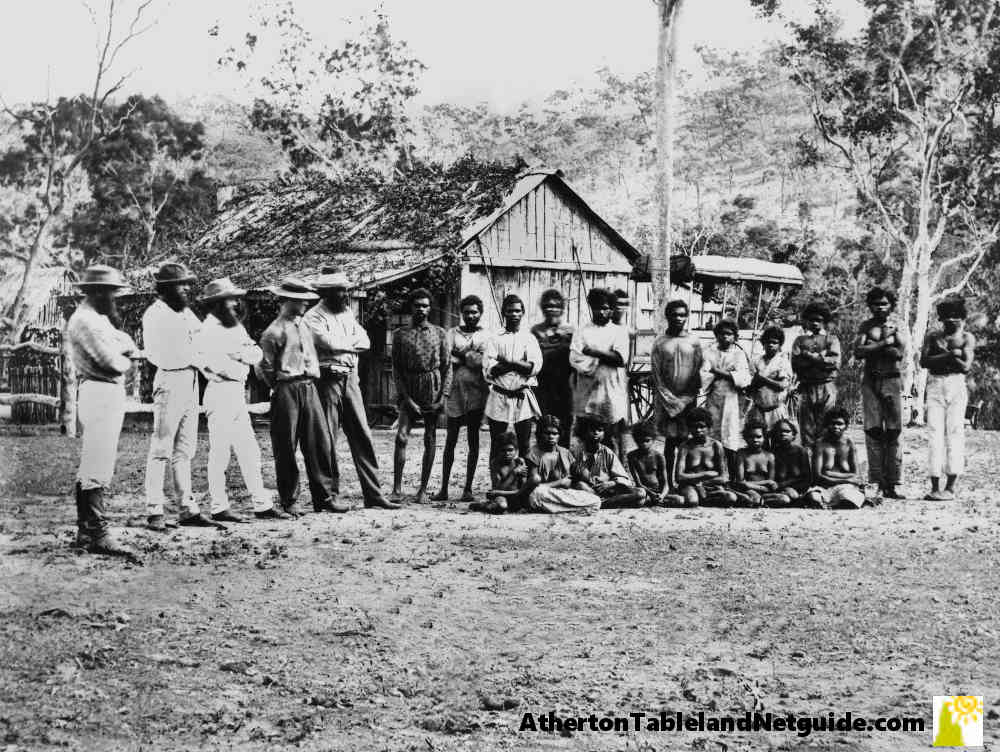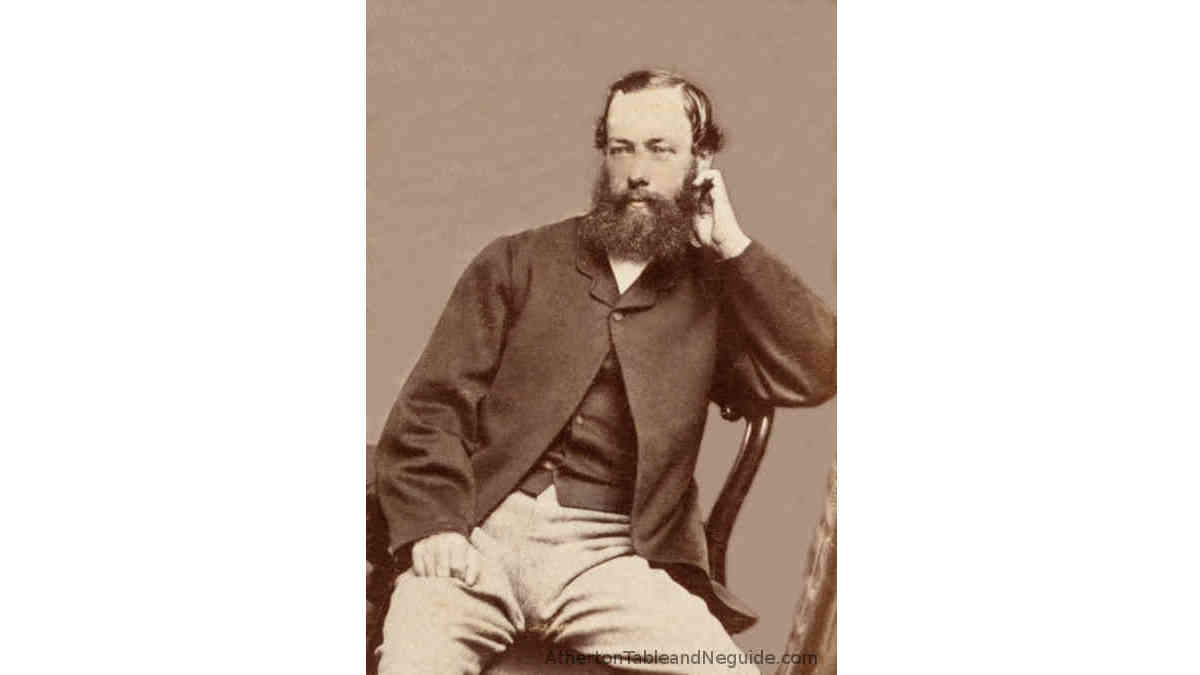Richard Daintree (1832-1878) was one of the first photographers in Australia, and after beginning his career as a geologist and photographer in Victoria, Daintree moved north as a business partner of pioneer pastoralist, and well-known North Queensland explorer, William Han, in 1864. Thus, Daintree has left a legacy of photographs documenting life in the north during the 1860s and 1870s. These constitute the first photographs taken in North Queensland.
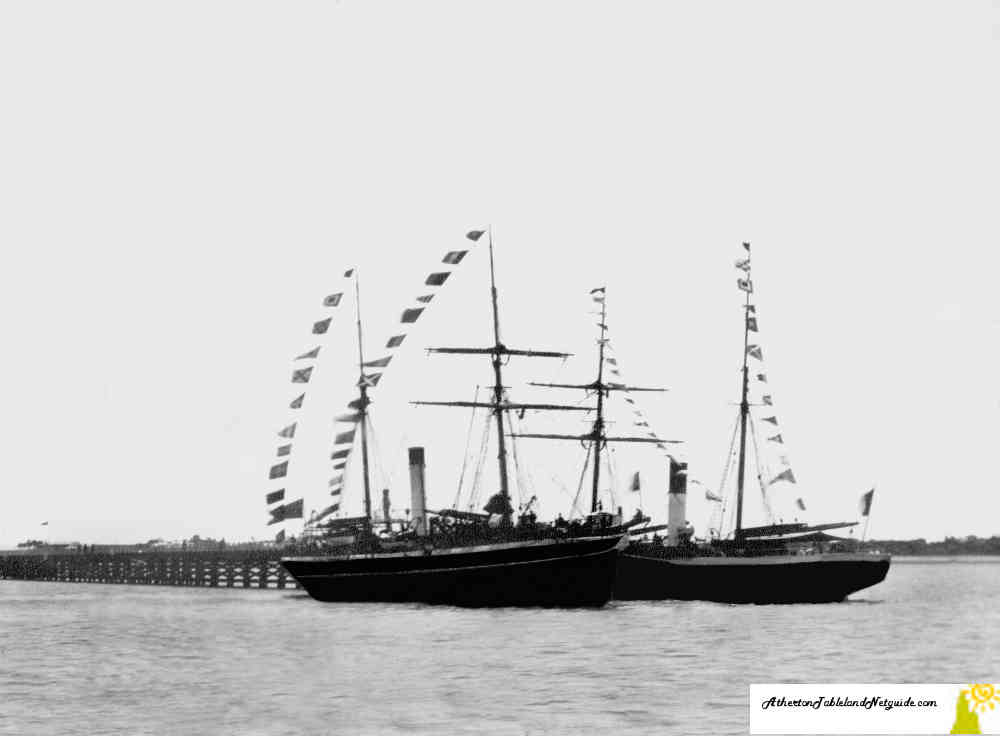
Daintree mixed his passion for photography with his keen interests in prospecting and exploration. A trained geologist and metallurgist, among his discoveries were the goldfields of Cape River, Gilbert, and Etheridge between 1865 and 1870. Daintree also discovered a copper deposit on the Einasleigh River. The Queensland government appointed Daintree as geologist in charge of north Queensland in 1868, and he carried out a systemic geological survey of North Queensland between 1868 and 1870, which included use of photography. As such, Daintree was a pioneer in the use of photography in scientific field work.
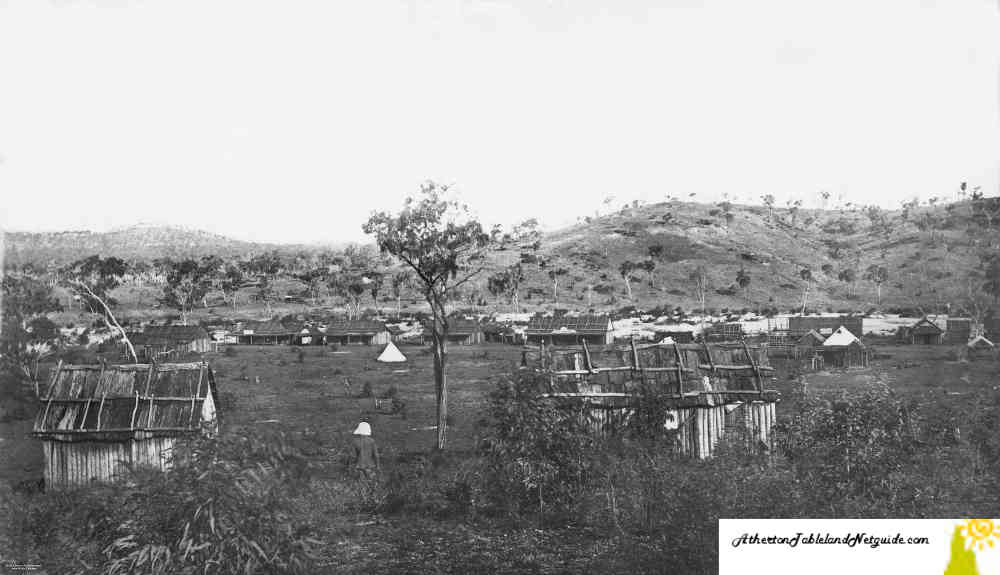
Daintree was commissioned to take photographs depicting life in the colony of Queensland for the London International Exhibition of 1871, and was appointed Commissioner to the Exhibition. His role was to promote the colony to potential emigrants and investors.
Daintree and his family -his pregnant wife and five children – boarded the Queen of the Thames in February, 1871, carrying the photographic negatives along with a collection of fossils and plant and animal specimens. The Daintrees escaped with their lives when the ship was wrecked off the coast of South Africa. While most of the collection was lost, Daintree managed to salvage the glass plate negatives and a geological map of Queensland.
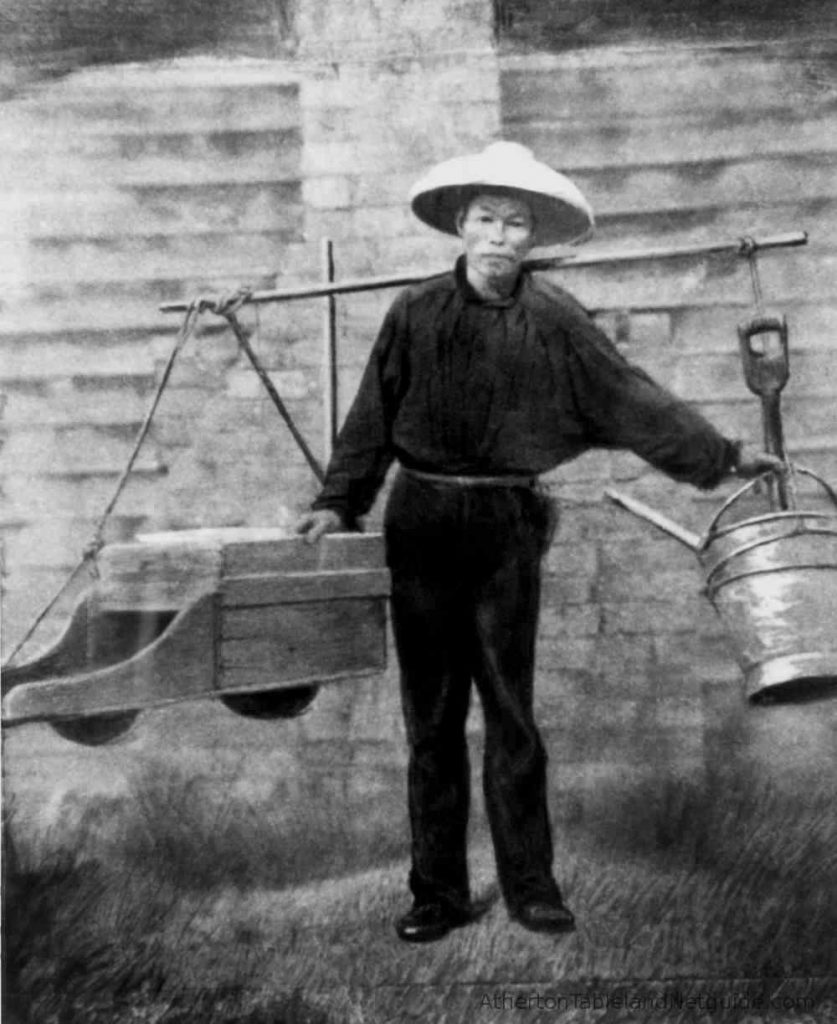
The Queensland display at the London International Exhibition was a success, and Richard Daintree was appointed Agent-General of Queensland in London, where he remained to continue promoting Queensland, using his photographs in displays and publications.
Daintree’s discoveries and promotional work helped the development of north Queensland, attracting immigrants and settlers, and his name is memorialised in place names such as the Daintree River, Daintree National Park, Mount Daintree, and the town of Daintree.
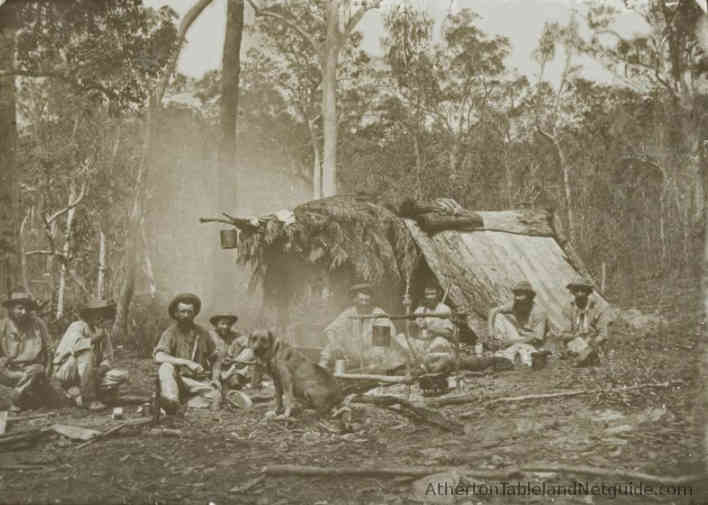
Daintree’s photographs are the only surviving photographic records of north Queensland in the 1860s, when Europeans were just beginning to probe the area for land and resources. Some of the pictures, such “Eight Men and a Dog” depict the hard life of the pioneer miner, surviving in the remote wilderness with a rudimentary shelter of a tent, with some bark added to the top, and a makeshift awning of leaves for extra shade.
Cape River Miners shows a crude, but more upscaled accommodation for miners. While “Eight Men and a Dog” was unlikely to have been featured in promotional material, Cape River Miners, was intended for the London exhibition. It has the look and feel of a studio shot, despite it’s bush location.
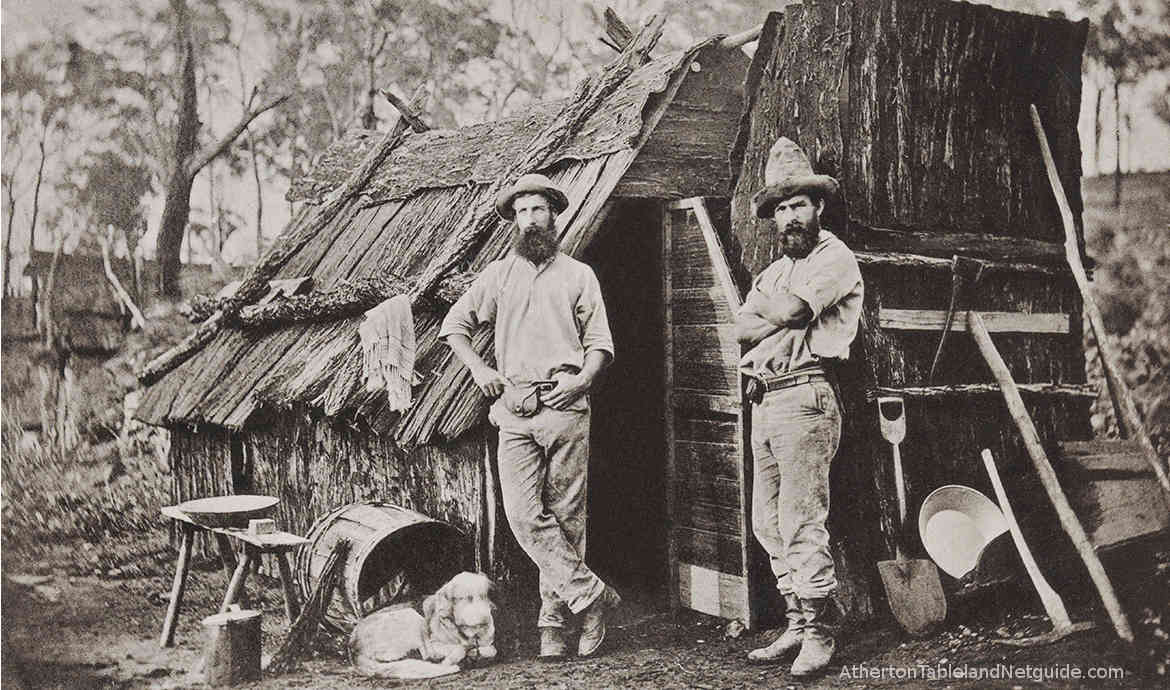
The emigrant … who intends taking his chance at the goldfields, must not
run away with the idea that a fortune awaits him as the result of a few
months of hard work, but rather he is certain of the hard work in any case,
with the odds against him as to the lighting on the fortune. He will
probably be no better housed than the miners seen in the illustration, who,
however, it will be admitted, do not look as if their rough habitation or
mode of life disagreed with them.Queensland, Australia. Its territory, climate and products:
agricultural, pastoral, and mineral &c, &c, with emigration regulations
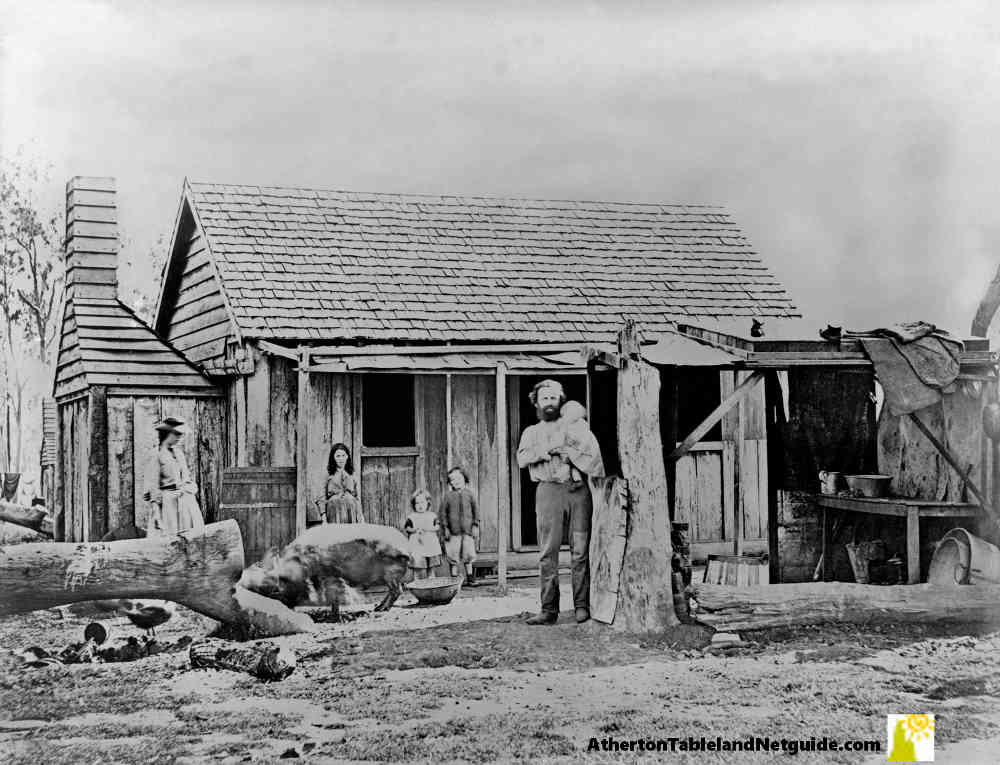
Family and Farmhouse, also known as Free selector’s slab hut promised a higher level of habitation for the industrious family man as farmer.
The future agriculturalist would take care to select a small patch of the richest agricultural land, either alluvial scrub or volcanic. [See photographs number ten, three, four and six]. He will put up a slab hut, such as depicted here, from timber off his own land, fence in his selection. And then it will be his own fault if he has not plenty to eat and drink.Daintree, Richard. Queensland, Australia. Its territory, climate and products:
agricultural, pastoral, and mineral &c, &c, with emigration regulations. G. Street,
London, c.1872
